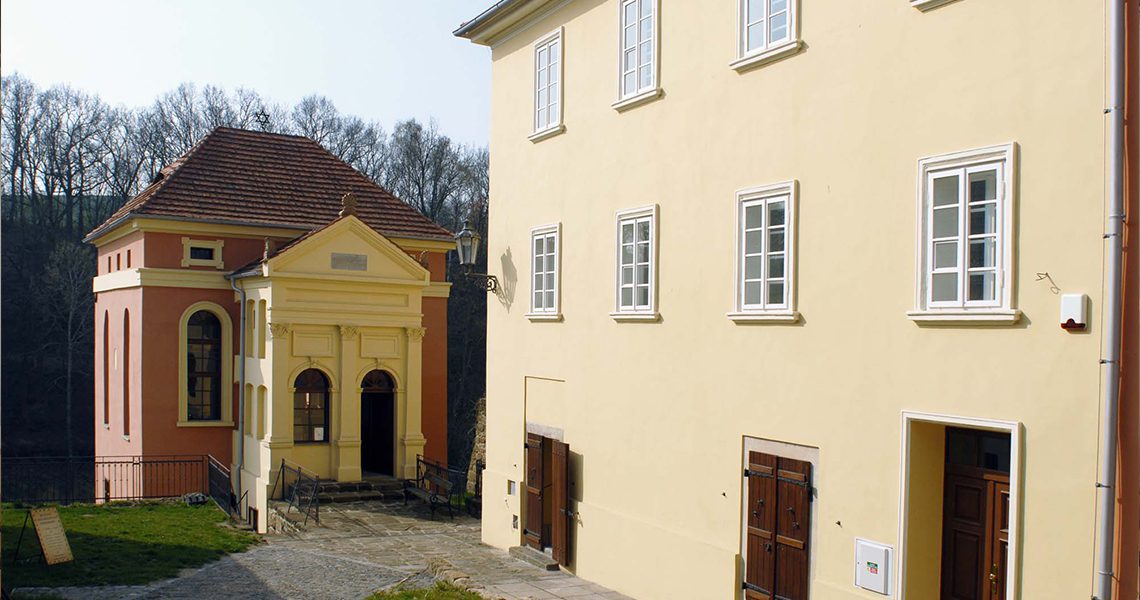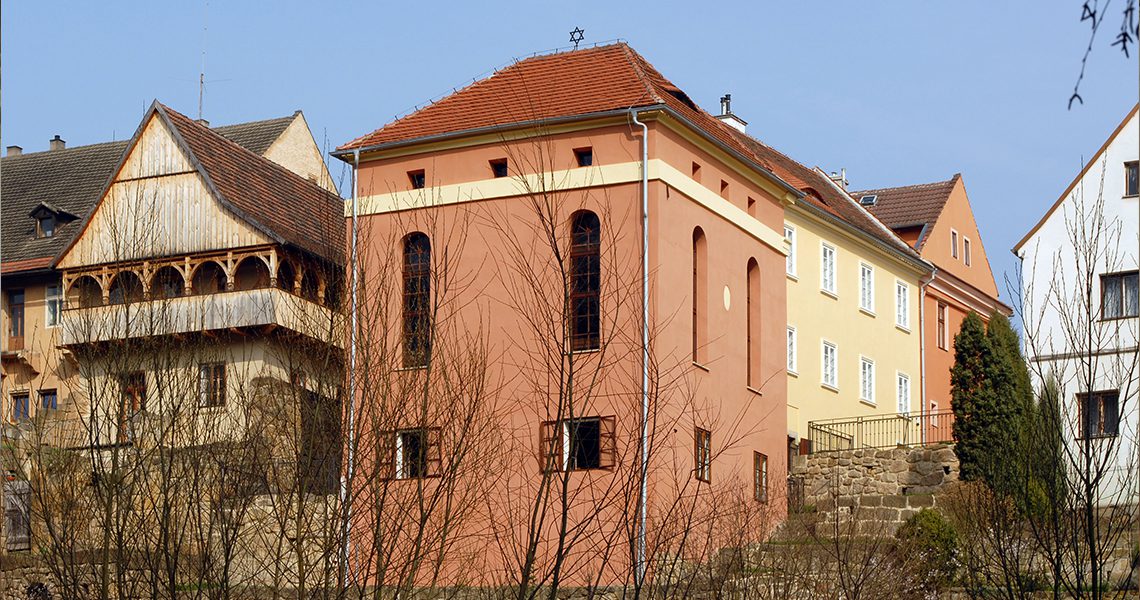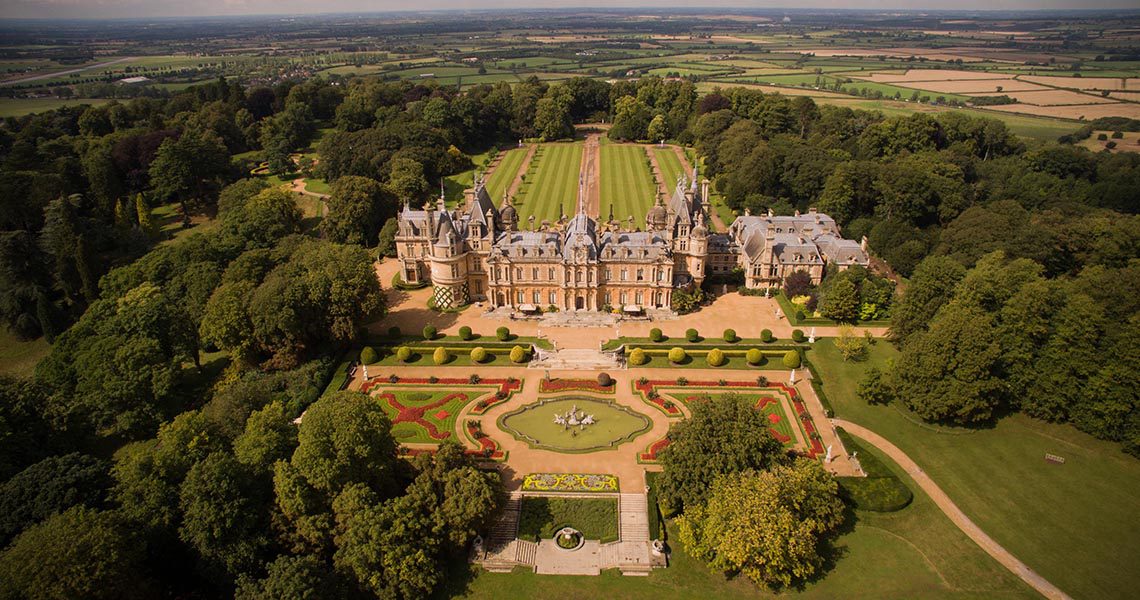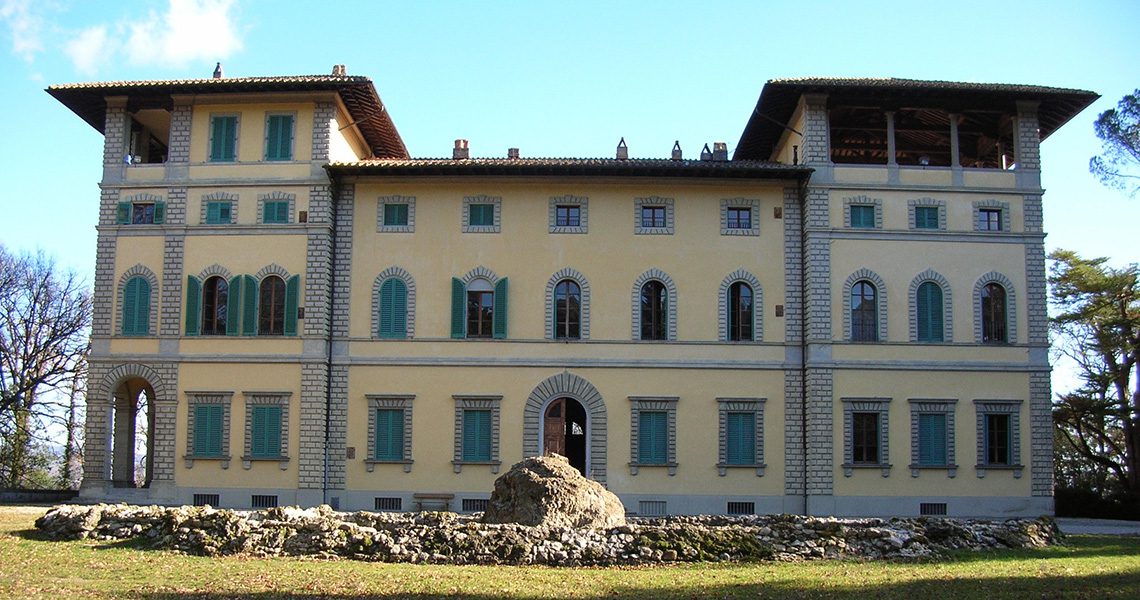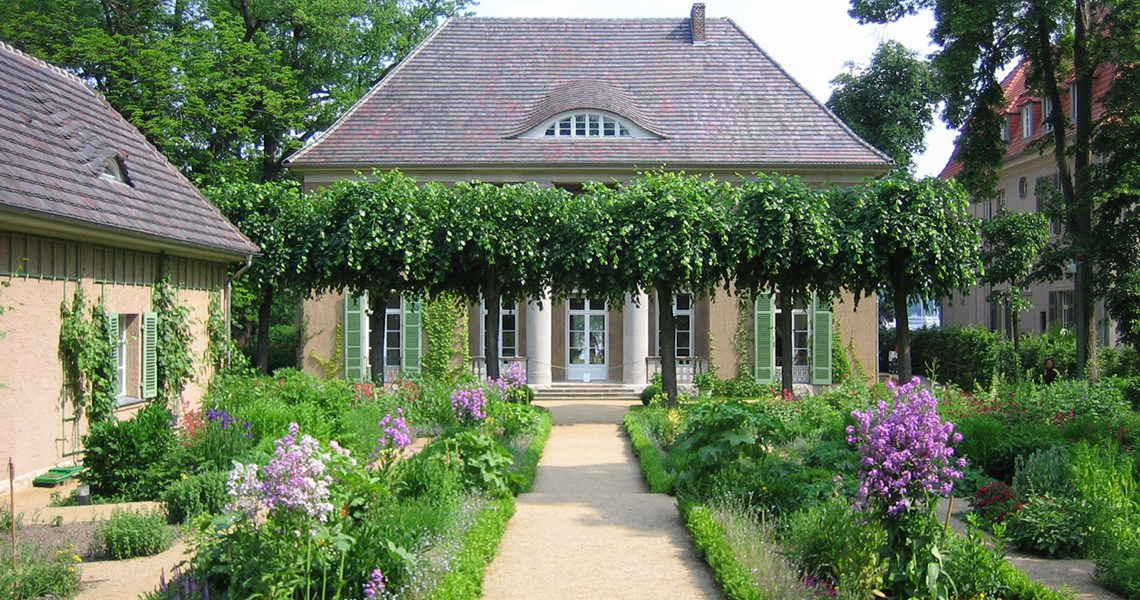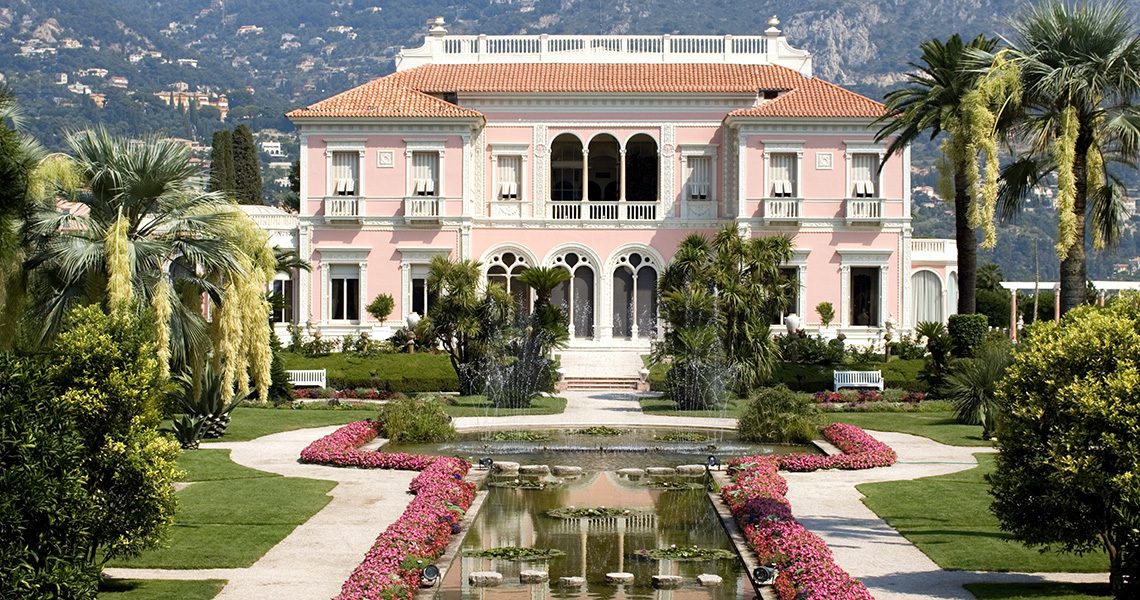10 Stars Synagogue – The Czech Jewish Heritage Route
The History of the Jews in Bohemia and Moravia
The Jews arrived in the Czech Lands as early as during the time of the Great Moravian Empire in the 9th century. They first passed through as merchants and later started settling down permanently here. A report by an Arab-Jewish merchant, Ibrahim Ibn Yaqoub, written in 965, refers to the presence of Jewish merchants in Prague marketplaces. At first, Jews lived either in separate enclosed courts or, for safety and religious reasons, in small settlements. At the time, they founded these freely, with the permission of the ruler, in places which they found suitable, probably close to international or local markets.
Their situation was affected, however, by the Crusades and restrictions which pushed them to the margins of society. They were the direct subjects of the king, who provided protection to them for which, however, they had to pay. From the end of the 13th to the end of the 18th century the Jews were mostly forced to live in ethnically enclosed settlements. Different kinds of settlements emerged; in some places, mainly in the country, they were just a cluster of cottages, in other places rows of houses along one or both sides of a “Jewish“ street, and in places where a larger number of Jewish families lived Jewish quarters were founded. Jewish streets and quarters were most often referred to as V židech [At the Jews], which corresponded to the Spanish Judería , German Judengasse or Judestadt and the French Juiverie. The now common term ghetto started taking root from the 16th century. The largest ghetto in the Czech Lands was the Jewish Town of Prague; other large ghettoes included, for example, Mikulov and Boskovice in Moravia.
Absolved from segregation by special grace were only certain privileged individuals (physicians, bankers etc.). Until the end of the Middle Ages, individual non-privileged families also lived dispersed among Christians in places where the number of settled Jews was negligible.
Most local exceptions to segregation were abolished by emperor Charles VI, whose Translocation Rescripts of 1726 ordered the establishment of separate Jewish settlements in all towns and municipalities where segregation, until then, had not been consistent enough. The provincial Consistory Commission had plans – very valuable today – of towns, villages and hamlets made that captured many details, including the distance of Jewish homes from churches and procession paths and places where Christian festivals took place.
The ghettoes were separated from the other parts of the town either by a wall or just a bar or merely a chain. The border was not only an ethnic and cultural barrier, but was also intended as protection of the residents against attack. On many occasions, however, this protective function failed. The same as in whole Europe in the Czech Lands, too, there were pogroms and instances of Jews being expelled from royal towns. The greatest disaster occurred in 1744 when Jews were banished from the Kingdom of Bohemia; four years later, empress Maria Theresa made their return conditional on the payment of a regular “tolerance tax“.
The reforms introduced by her son, emperor Joseph II, the so-called “emancipation“, improved the situation of the Jews. The Translocation Rescripts and the Familiant Law, which limited the number of Jewish families, were abolished as well as the payment of the tolerance tax, and equality of Jews and Christians under the law was guaranteed. After 1867, Jews could move into towns where they fully applied their accumulated intellectual potential and started taking part in economic and cultural life. People started leaving the Jewish ghettoes, synagogues became deserted and were often sold to serve other purposes.
In the Czechoslovak Republic, founded on October 28. 1918, many Jews, as leading representatives of modern culture and the economy, participated in the building of the new State – Czechoslovakia. Its existence ended violently with the Munich Agreement in September 1938 and the Nazi occupation of the remaining part of Bohemia and Moravia on March 15, 1939. At that time, the Czech Lands had more than 118.000 Jewish citizens, of whom some twenty-six thousand managed to emigrate – almost without any of their assets. Close to 89,000 Jews were deported to the Terezín [Theresienstadt] concentration camp or directly to the annihilation camps. Many others were arrested before they could be deported, others committed suicide. After the end of World War II, it was difficult to restore the life of the Czech Jewish community; most Jewish communities had disappeared, many synagogues had been destroyed. The communist era then contributed to even more devastation.
The revival did not come until 1989. The Jewish monuments that in spite of all the adversity survived in considerable numbers thanks to the once dense net of Jewish settlement were returned by restitution laws to the Jewish communities and the Federation of Jewish Communities.
Today, an outsider would recognise former ghettoes only with great difficulty, though some of them (e.g. Boskovice, Březnice, Polná), albeit with rebuilt houses, have been preserved within their former borders. The most important building in every ghetto was the synagogue as the spiritual centre, which often housed a school (e.g. in Úštěk) and sometimes also a ritual bath. The facilities of a larger ghetto would include a rabbinic house and community house as their administrative centres (e.g. Boskovice, Brandýs, Polná). The cemetery was always an essential part of any Jewish community; in the Middle Ages it would often lie inside the town, later it had to be located beyond the town walls. in the Czech Lands, more than three hundred and sixty Jewish cemeteries have been preserved until the present day.
Revitalisation of Jewish Monuments Project
In 2010, the Federation of Jewish Communities in the Czech Republic received the largest grant allocated over the entire post-war period for the preservation of Jewish monuments in the Czech Republic – 10 million Euro, with 85% coming from the European Fund for Regional Development and 15% from the Czech government. Thanks to this, it was possible to reconstruct and restore 15 historical buildings representing the most valuable cultural heritage restituted as the property of the Jewish communities. Thus 10 regional Jewish museums in 10 towns were established, with expositions documenting the past existence of a number of significant Jewish centres in the Czech lands besides Prague (www.jewishmuseum.cz). Thanks to the collaboration with local partners these centres are coming back to life today, allowing visitors to become acquainted with the history and traditions of Czech Jews and with outstanding personalities connected with these sites. And, last but not least, also to remember the tragic fate of European Jews in the 20th century.
BOSKOVICE (BOSKOWITZ)
The historic Boskovice downtown including the old Jewish ghetto has been a landmark heritage preservation zone since 1990. The town sights include a 13th century castle on the hill above the town, a large 19th century chateau, a 14th century church, an old town hall, and last but not least an exquisite synagogue built in 1636 in the large and relatively well-preserved Jewish ghetto that still features an original ghetto gate. Recent renovation work succeeded in preserving most of the interior of the synagogue, decorated with magnificent baroque ornamental wall paintings featuring Hebrew inscriptions and traditional Jewish motifs.
At its height, the ghetto comprised 150 buildings, many of which have survived until this day, mostly in their early 19th century form. In 1848, the ghetto was home to some 2,000 Jews, who accounted for one-third of the entire population of the town. Thanks to the revitalization project the dilapidated building at Bílkova Street No. 7 dating to 1826, which used to be the seat of the Jewish town council, the local rabbi and the Jewish school, was fully renovated. Since the completion of construction and restoration works, the building has housed a permanent exhibition on historic Jewish settlements in Bohemia and Moravia. The exhibition also presents information on the state of Jewish quarters in the country today and on the preservation (or lack thereof) of this cultural heritage by the state and municipalities in the post-war years.
The theme of the exhibition is Synagogue Architecture in the Czech Lands.
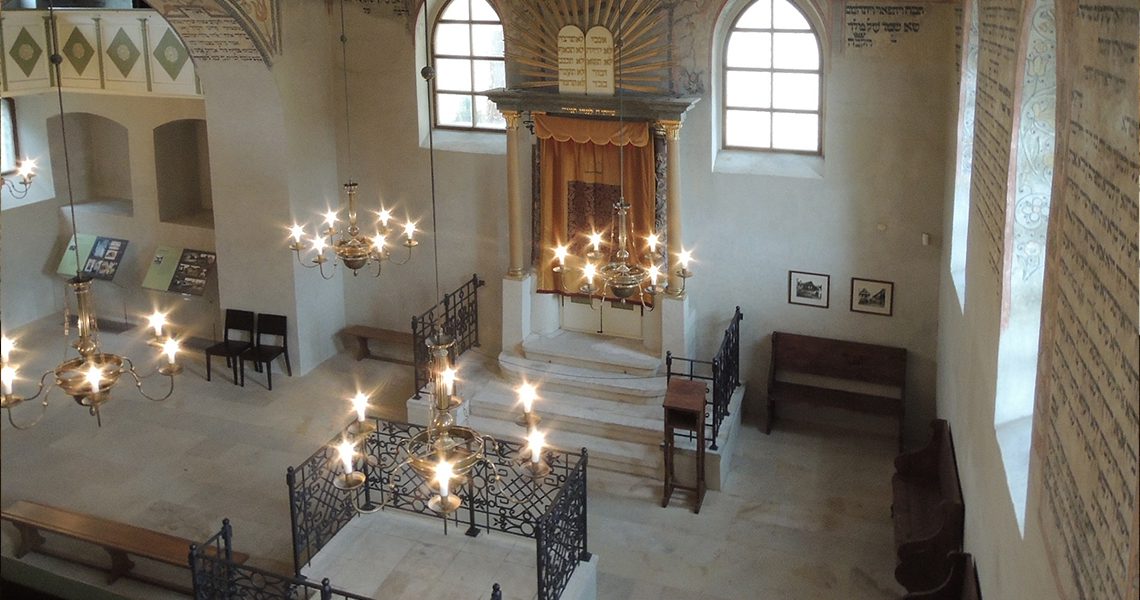
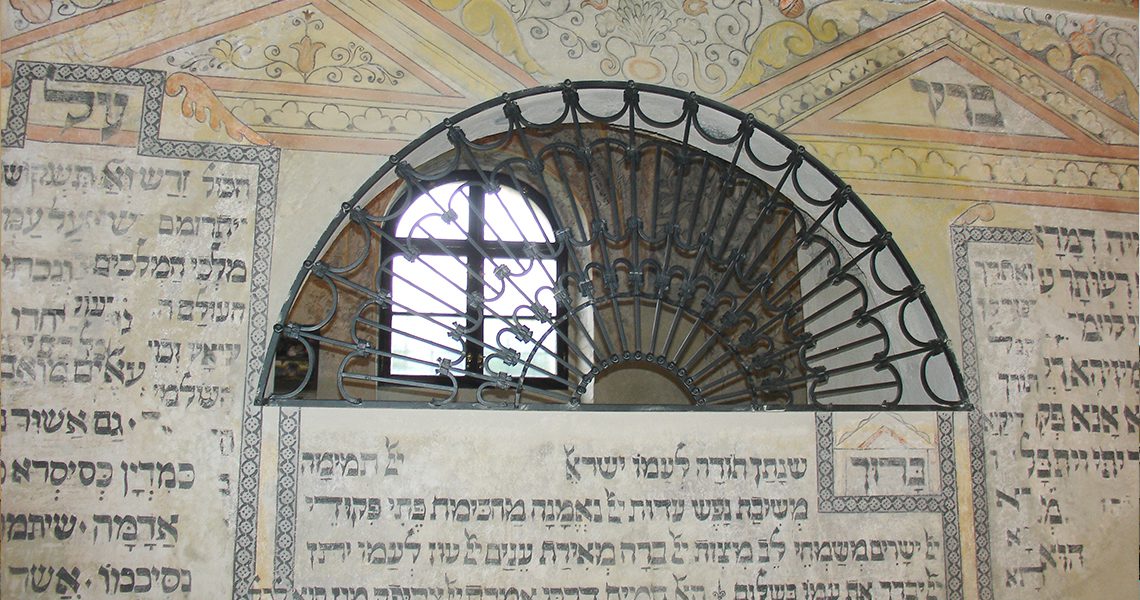
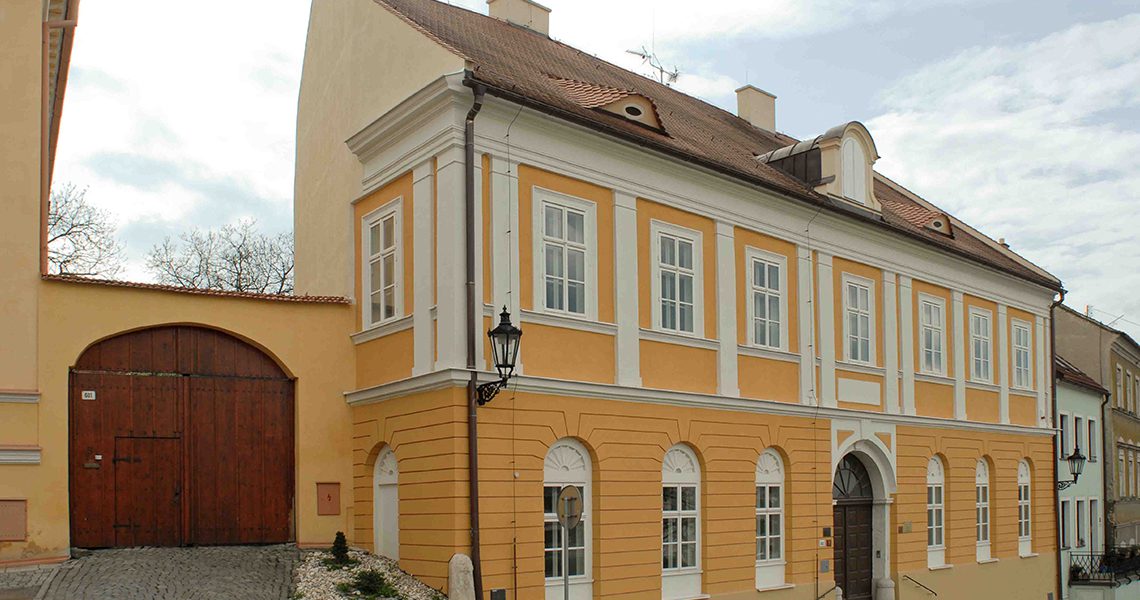
Synagogue: ul. A. Trapla, GPS 49°29’14.672″N, 16°39’31.448″E;
Municipal House: Bílkova 7, GPS 49°29’13.077″N, 16°39’26.933″E
www.10hvezd.cz/en/object/boskovice/
BRANDYS NAD LABEM (BRANDEIS)
The first record of the Jewish community in Brandýs is from 1515. In the middle of the 19th century, the small Jewish quarter was home to more than 300 individuals of the Jewish faith. The unassuming neo-classical synagogue built in 1828–1829 is located some 200 meters northwest of the main square. One half of the building houses the actual synagogue, while the other half was used as a municipal house and school. Services were held here until the time of the German occupation.
In 1962, the building was converted into a medical warehouse. The “Revitalization of Jewish Monuments” project involved the complete renovation of the building based on archaeological, historic, and restoration-related research and old photographs and involving the two-story interior gallery, the Aron Kodesh, and all the interior wall decorations. The project thus contributed to the rebirth of this exquisite synagogue and to the preservation of a priceless Jewish monument.
The theme of the exhibition is The Roots of Judaism: Rabbinic Literature and Scholarship.
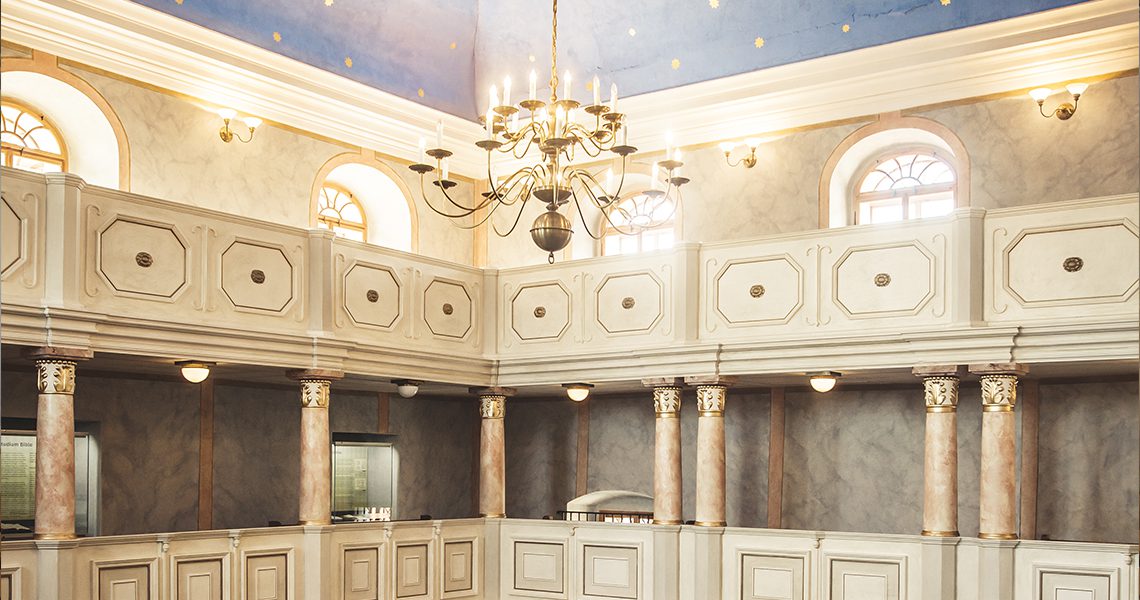
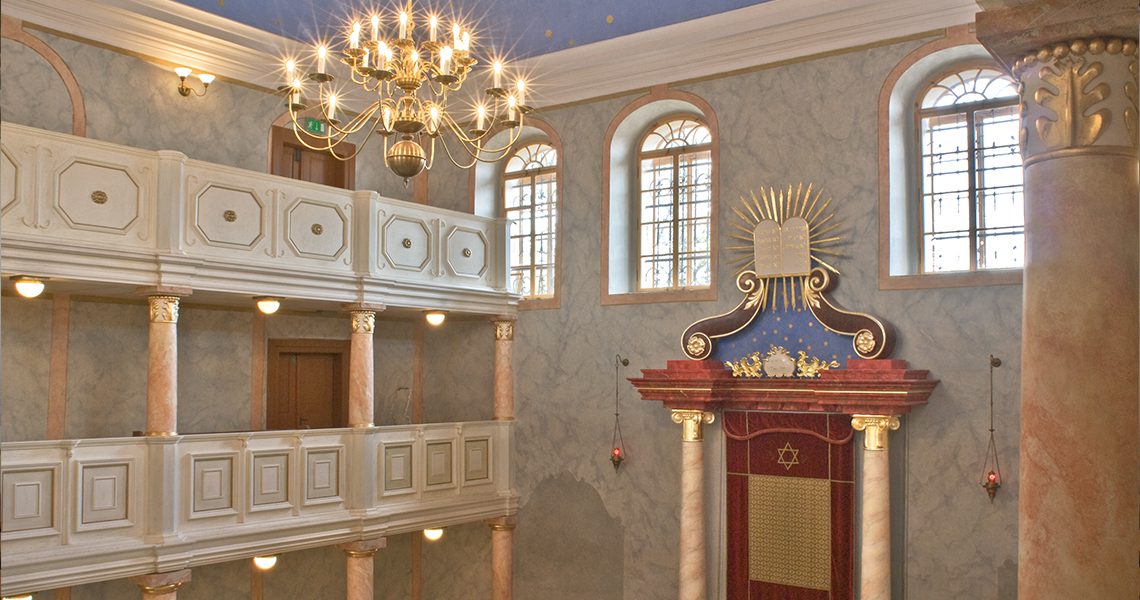

Address: Na potoce 140, GPS 50°11’17.236″N, 14°39’26.554″E
www.10hvezd.cz/en/object/brandys-n-labem/
BREZNICE (BRESNITZ)
The local synagogue was built in 1725; its current appearance is the result of the renovation carried out in the neo-classical style after a fire in 1821 plus additional changes made in 1874 and in the early 20th century.
These later alterations in no way harmed the exterior and interior appearance of this exceptionally beautiful and precious building. Inside, the building is divided into a vaulted synagogue with a separate women’s gallery and the former Jewish school on the upper floor, with the shamash’s quarters on the ground floor.
The former ghetto surrounding the synagogue is one of the most interesting urban Jewish settlements to have survived in the Czech Republic. It was built in the early 18th century.
The theme of the exhibition in the Breznice synagogue is Jewish Learning in the Czech Lands. Its main aim is to show the history of Jewish learning in the Czech Lands in relation to the life of the local Jewish community and its institutions. The exhibition also looks at the contribution of the Jewish population to cultural and economic developments in Central Europe, with a focus on the Czech Lands.

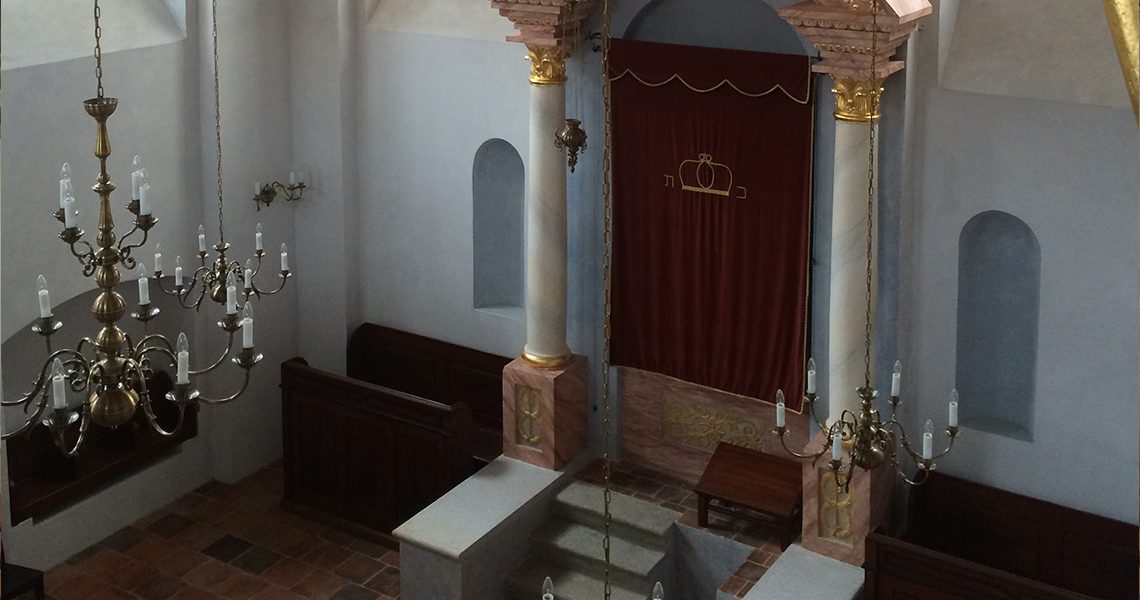
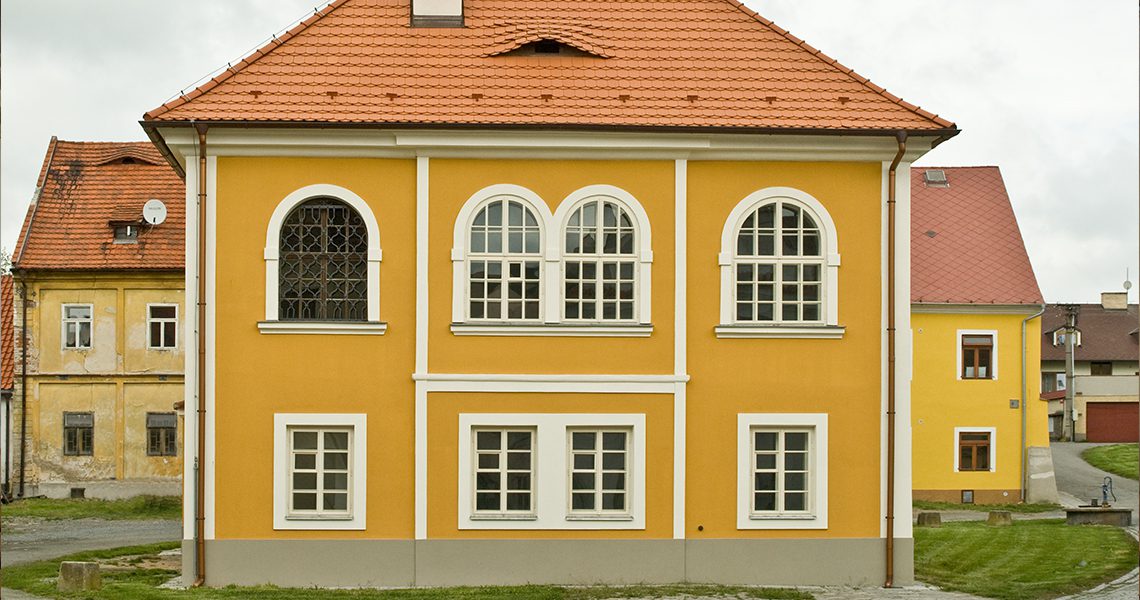
Address: Lokšany 644, GPS 49°33’30.448″N, 13°57’1.752″E
www.10hvezd.cz/en/object/breznice/
JICIN (JITSCHIN)
The local baroque synagogue was opened to the public after being renovated in 2003–2008. The recent revitalization involved just several minor alterations. The most important project-related work was at the former Jewish school, located nearby in the middle of Židovská Street. This remarkable Late-Empire building was erected following a large fire in 1840 on the site of several older buildings.
The two-story building features a semi-circular Empire-style staircase, massive Dorian columns and a cast-iron railing, a smaller courtyard wing and a courtyard gallery. From the beginning the aim of the Federation was not only to preserve this interesting landmark and restore its original appearance, but also to create premises for a main exhibition and for other social activities, as well as an information center for the nearby synagogue.
The permanent exhibition is dedicated to Jewish literature in the Czech Lands in the 19th and 20th century, with a focus on leading both German and Czech-writing authors and genres. Its aim is to show that the intellectual climate of the Czech Lands arose from the interaction and encounter of three cultures (Czech, German, and Jewish), and how this cultural climate – which had been so extraordinarily beneficial to literature – was destroyed by the catastrophe of 1933–1946 and the totalitarian regime after 1948.
The theme of the exhibition is Jewish Writers in the Czech Lands.
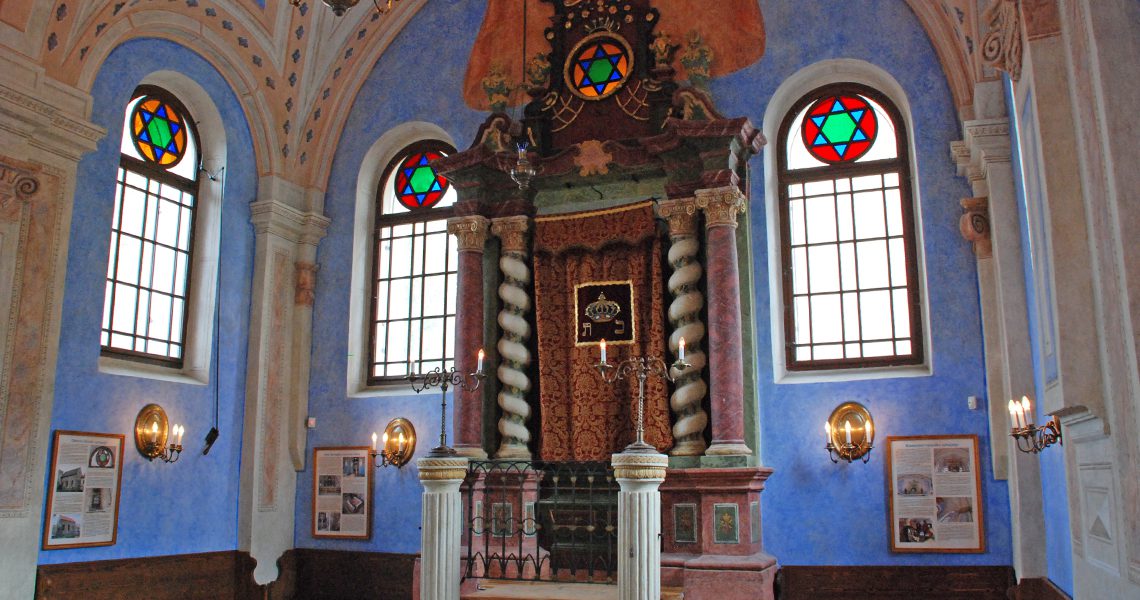
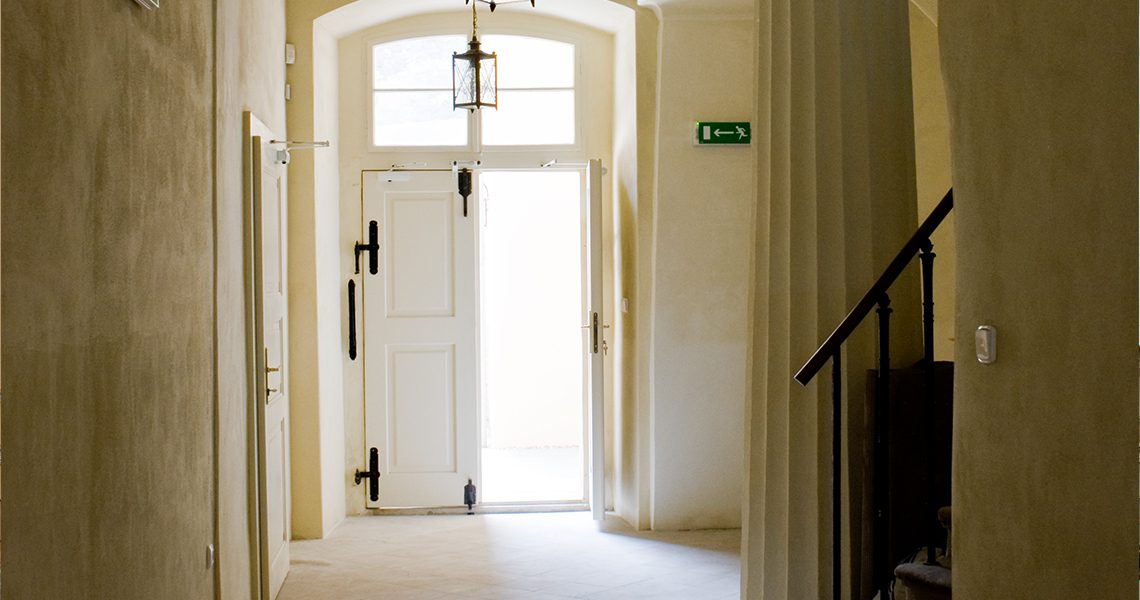
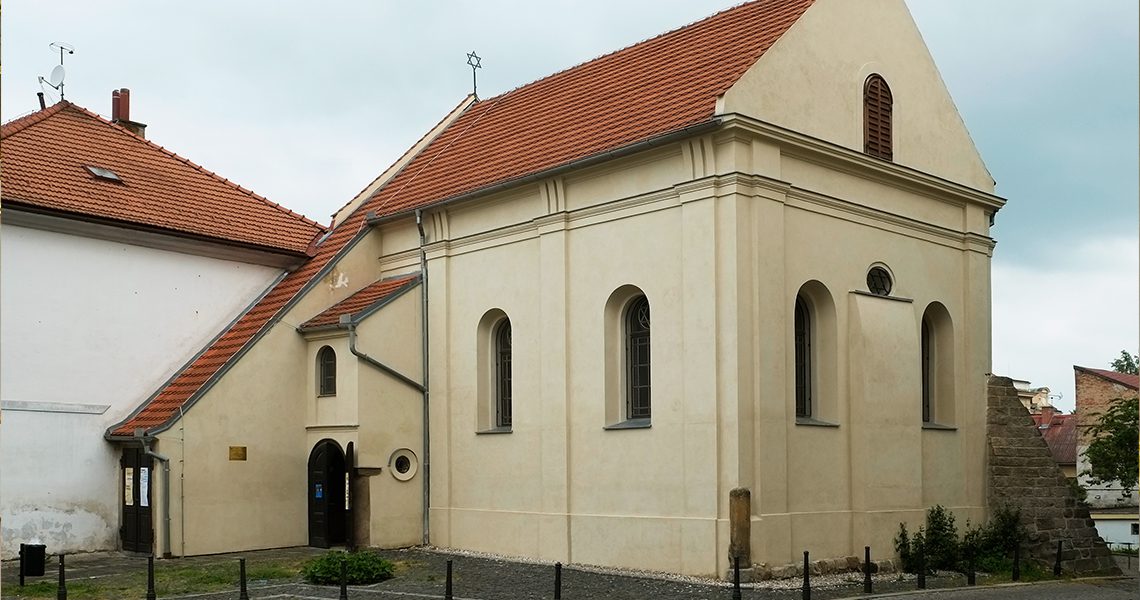
Synagogue: Židovská 96, GPS 50°26’17.217″N, 15°21’10.122″E
Jewish School: Židovská 100, GPS 50°26’16.210″N, 15°21’8.534″E
www.10hvezd.cz/en/object/jicin/
KRNOV (JÄGERNDORF)
Unlike the majority of Jewish houses of worship in the former “Sudetenland” (German speaking border territories annexed to German Reich in 1938) burnt down during the pogrom known as Kristallnacht (the night of November 9 – 10, 1938), the Krnov synagogue has survived in relatively good condition.
It was built in 1871 for the Krnov newly established Jewish community. The large, twin-towered neo-Romanesque building with painted coffered ceiling, arcaded women’s gallery, and ornate decoration is testament to the economic strength of the local Jewish community. Following the war, it was for a long time (until 1997) home to the regional archive. With its inclusion into the recent revitalization project, this unique Jewish monument finally received sufficient funding for its complete renovation and restoration of its interior.
The subject of the permanent exhibition in the synagogue is Jewish Industrialists, Entrepreneurs and Inventors. Through the use of multimedia tools, the exhibition aims to inform visitors about the contribution of members of the Jewish community in Bohemia, Moravia, and Silesia to the development of industry, trade, and science in the Czech Lands. Many of these individuals helped to found modern industry and a diverse range of entrepreneurial branches throughout the country. The exhibition also recalls the fact that the Czech Lands were home to many Jewish scientists whose activities and inventions significantly contributed to the development of science and technology.
The theme of the exhibition is Jewish Industrialists, Entrepreneurs and Inventors.
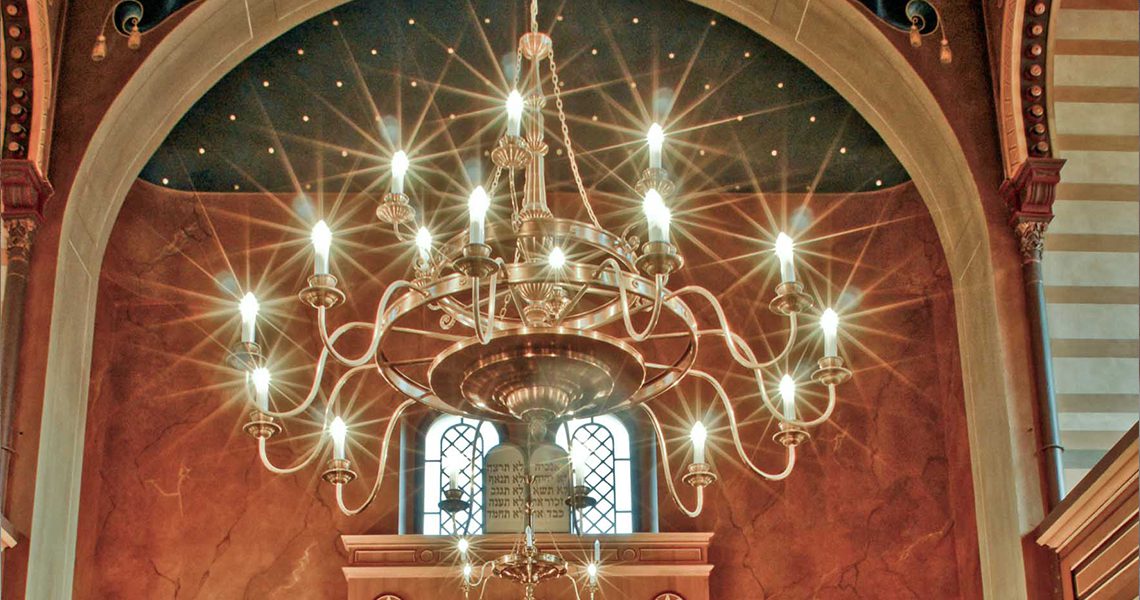
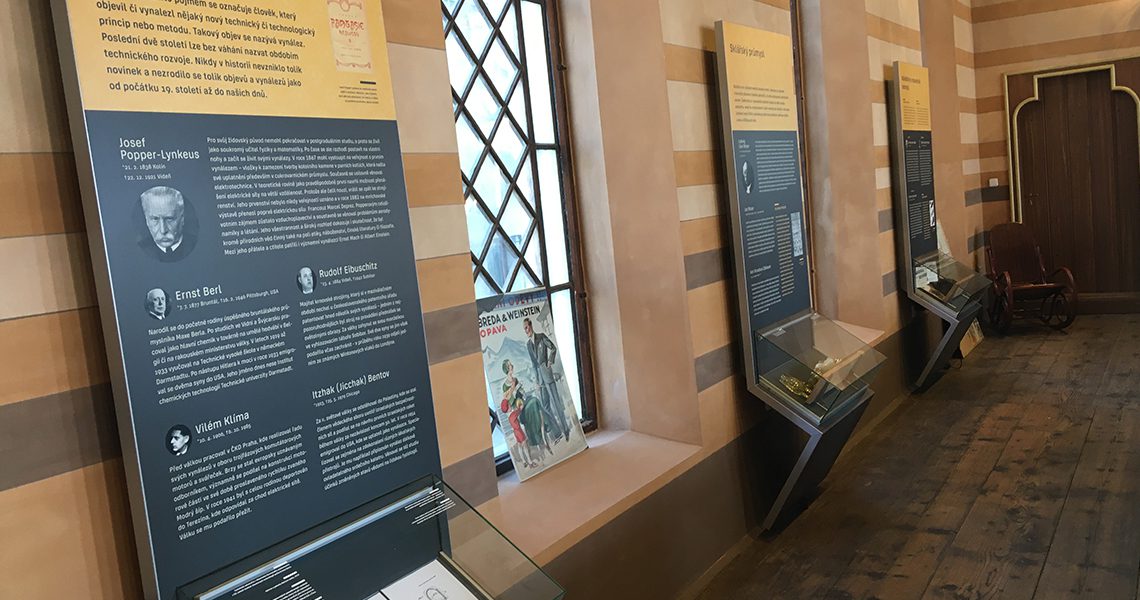
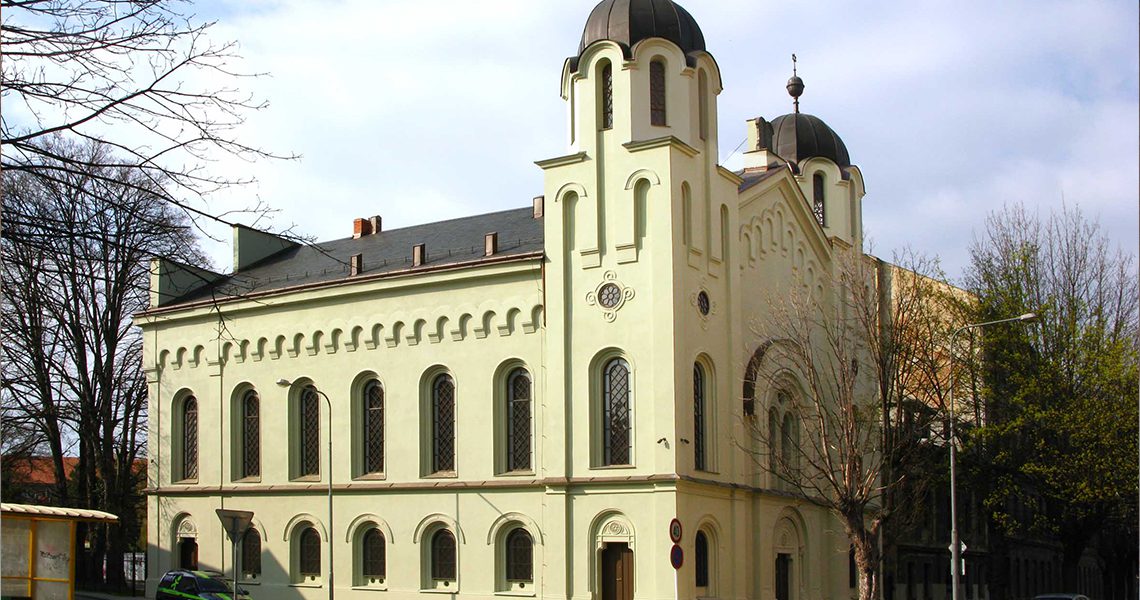
Address: Soukenická 83/28, GPS 50°5’23.178″N, 17°42’26.931″E
www.10hvezd.cz/en/object/krnov
MIKULOV (NIKOLSBURG)
Mikulov Chateau, the most visible landmark of the town, belonged to the Dietrichstein family. The Jewish quarter (or rather, town) spread out to the west of the chateau hill, which once marked the boundary between Christian and Jewish Mikulov. Until the mid-19th century, the local community was the second largest in the Czech Lands (right after Prague), and for three centuries it was the seat of the Moravian Chief Rabbi.
Ever since the local ghetto and its synagogues (in the 19th century there were twelve) were brutally and senselessly demolished in the 1960s and ’70s, the main reminders of the Mikulov Jewish community have been the large and exceptionally prized Jewish cemetery and several buildings that managed to survive the destruction. Fortunately, these include the most important house of worship, the Upper Synagogue (also known as the Altschul, Old, or Great Synagogue), which was built in the mid-16th century and was later renovated in the baroque style. According to all available sources, the four-pillared synagogue built in the Polish (Lviv) style is the only building of its type in the Czech Republic.
The permanent exhibition, Rabbi Loew and Jewish Learning in Moravia introduces visitors to the renowned Yehuda Levi ben Bezalel (Rabbi Loew, who was active in Mikulov as the Moravian Chief Rabbi in 1553–1573), Rabbi Shmuel Shmelke ha-Levi Horowitz (a leading figure of Hasidism and the Moravian Chief Rabbi of Mikulov in 1773–1778), and many other religious and secular Jewish authorities that lived and were active in Mikulov or in other Jewish communities in Moravia.
The theme of the exhibition is Rabbi Loew and Jewish Learning in Moravia.


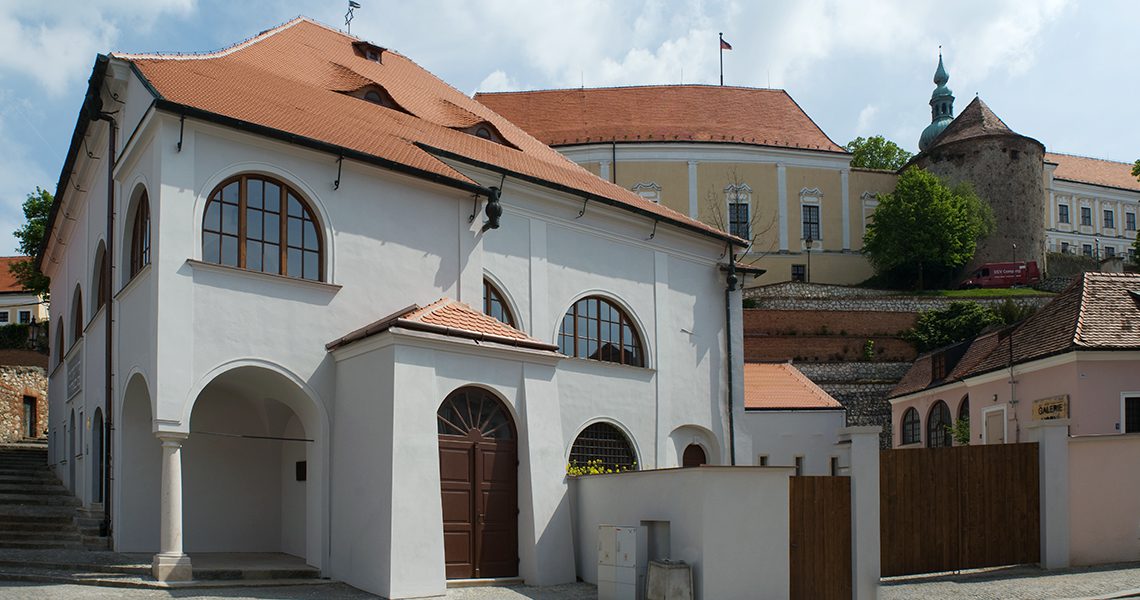
Address: Husova 1523, GPS 48°48’27.759″N, 16°38’9.821″E
www.10hvezd.cz/en/object/mikulov/
NOVA CEREKEV (NEU ZEREKWE)
Although the first record of Jews living in Cerekev dates from 1570, the existence of a Jewish community in the town is first recorded in the early 18th century. The local community reached its height in the 19th century. At the time when Jews in the Austrian Empire were emancipated in the middle of the century, Nová Cerekev was home to some 160 Jews (roughly 13% of the population). At the time, the community replaced the old wooden synagogue with a new house of worship, which has survived to the present day. It is the most distinctive building in the town after the local parish church.
The synagogue in Cerekev has survived more or less in the form in which it was built 157 years ago. This impressive neo-Romanesque building with Oriental elements, wide protruding towers, a clock on the western façade, and a five-sided eastern apse was built in 1854–55. The unusual and original building is one of the oldest examples of 19th century historicism in synagogue architecture. Thanks to the many large windows, the expansive interior – which is surrounded on three sides by brick women’s galleries on massive pillars – is unusually full of light. The surviving interior furnishings include the tall wooden Aron Kodesh with Hebrew inscriptions and wooden tablets containing the Ten Commandments.
The town’s two Jewish cemeteries spread out within sight of the synagogue: the older cemetery with graves from the 17th century and the new cemetery (1866) featuring an interesting neo-Gothic ceremonial hall.
The theme of the permanent exhibition is Synagogue Architecture in the Czech Lands. Architecturally, synagogues are the most distinctive buildings in Jewish settlements. Some of them have survived in the face of adverse circumstances (pogroms, Church prohibitions, expulsions, the Holocaust), and are an important physical reminder of the culture and life of Jewish communities from the Middle Ages to the 20th century. Today, these buildings not only testify to the rich culture and history of Jews in our country, but they are also monuments to the thousands of murdered Czech Jews. The exhibition offers a comprehensive overview of all the important buildings of this type in the Czech Republic from the 13th to the early 20th century.
The theme of the exhibition is Synagogue Architecture in the Czech Lands.
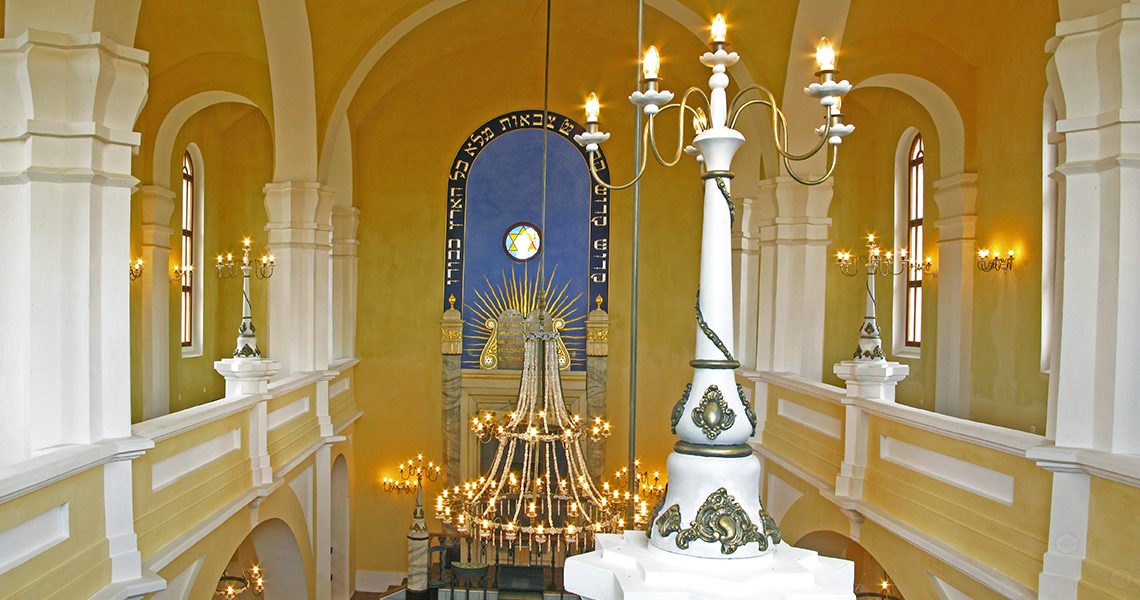
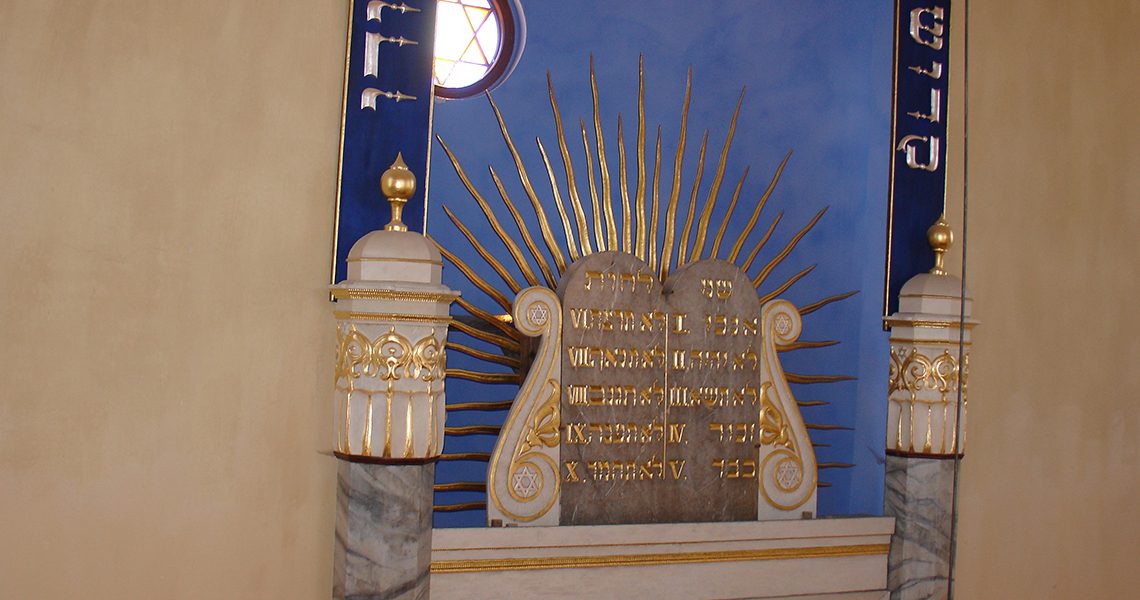
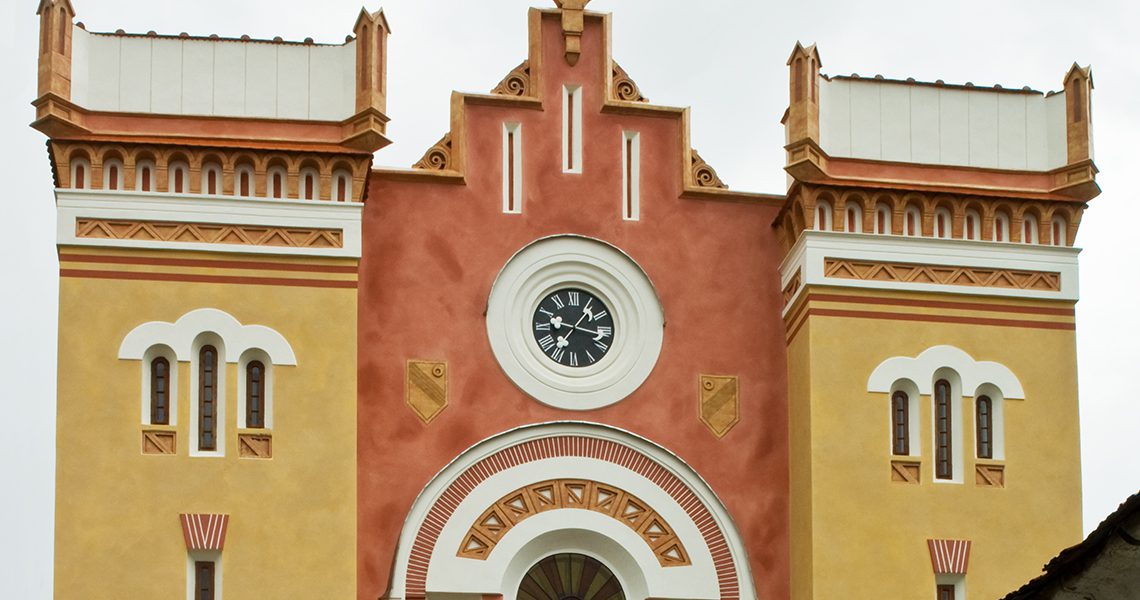
Address: Nová Cerekev 42, GPS 49°25’7.088″N, 15°7’8.262″E
www.10hvezd.cz/en/object/nova-cerekev/
PLZEN (PILSEN)
During the 19th century, when Jews were again allowed to settle in town following their expulsion in 1504, Plzeň saw the construction of three synagogues in succession: first the Old Synagogue, then the Auxiliary Synagogue (all that remains of it today are its outer walls), and finally the Great Synagogue.
The revitalization project included the overall renovation and restoration of the Old Synagogue built in the courtyard of building Smetanovy sady no. 5 (Jewish Community Plsen) by W. Wiesner in 1857–1859 in the neo-Romanesque style according to a plan by architect M. Stelzer. Thanks to the meticulous restoration work and the renovation of the decorative painting throughout the building, today’s visitors can admire its exceptionally beautiful interior, which had spent decades hidden underneath layers of dirt and dust in a seemingly uninteresting building.
The interior of the Old Synagogue is divided into three independent units for visitors to learn about Jewish customs and traditions (2nd gallery) as well as the history of Jews in the Plzeň region (1st gallery). The ground floor is reserved for short-term exhibitions, concerts and cultural events, and is also used for the religious needs of the Plzeň community.
The theme of the exhibition Jewish Tradition and Customs.
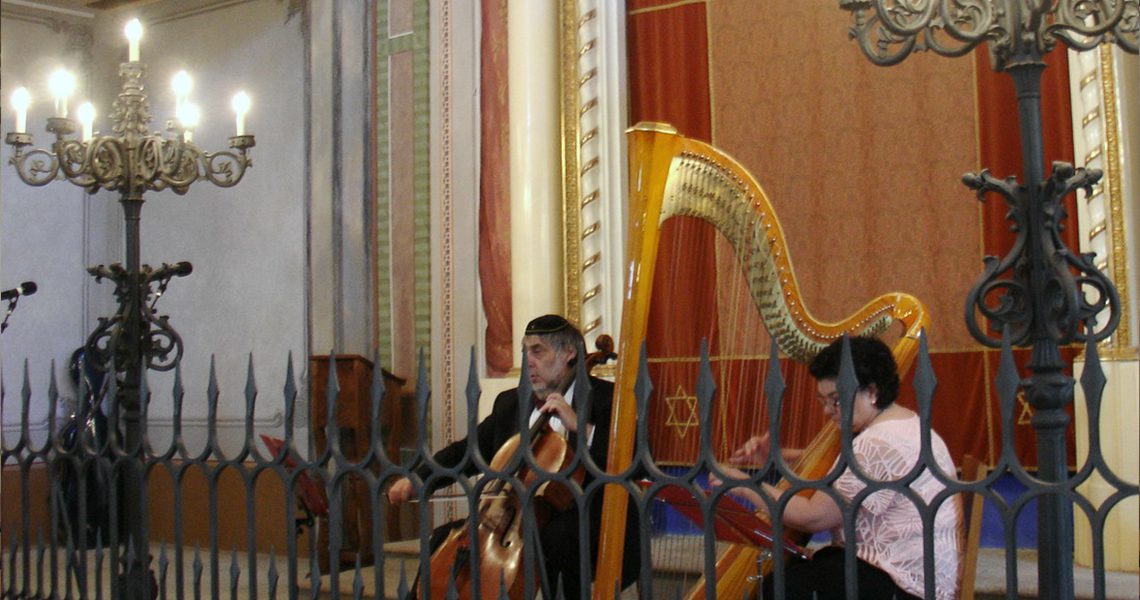

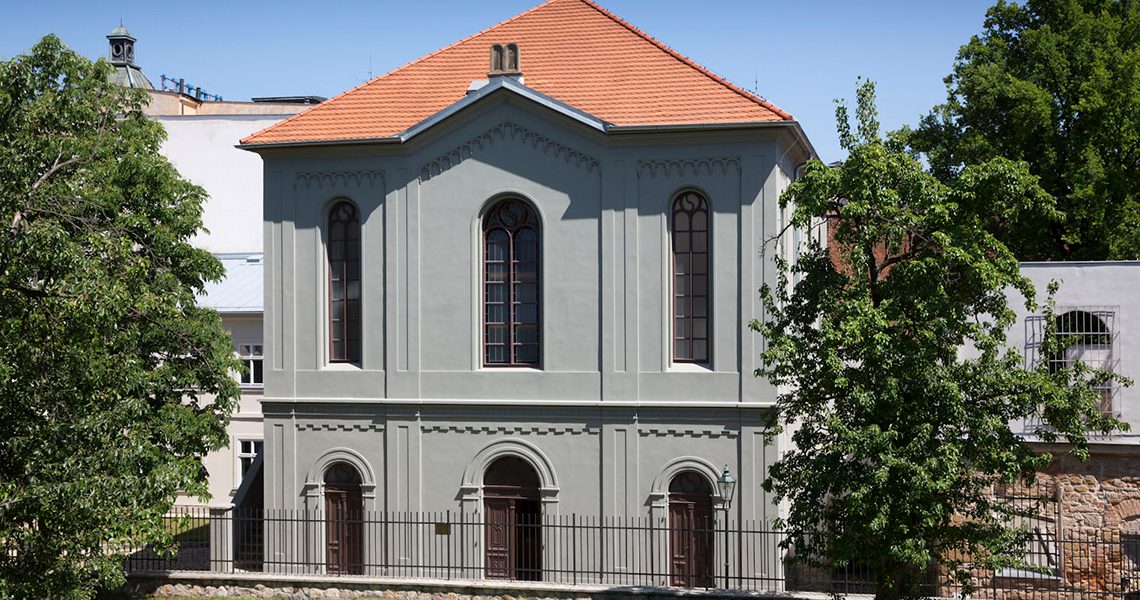
Address: Smetanovy sady 5, GPS 49°44’40.728″N, 13°22’28.299″E
www.10hvezd.cz/en/object/plzen/
POLNA
In 1681, the Count of Dietrichstein, whose family owned the town for nearly 300 years after 1620, allotted the local Jews a new settlement on its eastern edge. There, in 1683 they built a vaulted synagogue, which was renovated in 1863 in the neo-Gothic style. After 1994, when the synagogue was returned to the Federation of Jewish Communities in the Czech Republic, the building was completely renovated and then opened to the public in September 1999.
Thanks to its close and longstanding cooperation with the town of Polná in preserving and renovating Jewish monuments, the Federation subsequently succeeded in acquiring also the local rabbinical house. Erected in 1713, the building has been renovated several times in its history. The recent difficult renovation, which was part of the revitalization project, involved work on the main building, the ritual bath in the basement, the smoke kitchen on the ground floor, and the winter prayer room with its priceless paintings on the upper floor.
The town of Polná is internationally known because of the “Hilsner Affair”. The murder of 19-year-old Anežka Hrůzová in March 1899 sparked what was perhaps the largest anti-Jewish campaign in the Czech Lands prior to the Nazi occupation. At the turn of the century the campaign influenced not just Czech society, but all of Austria-Hungary. Leopold Hilsner, a young Jewish resident of Polná, was wrongfully accused of murder and given a death sentence in two separate trials. Emperor Franz Josef I later commuted the sentence to life imprisonment. In defending Hilsner, Tomáš Garrigue Masaryk, the future president of Czechoslovakia, took a decisive stance against accusations that the crime had been a ritual murder performed by Jews to obtain Christian blood.
The main exhibition in the rabbinical house is entitled The Stage of Anti-Semitism. The Leopold Hilsner Case.
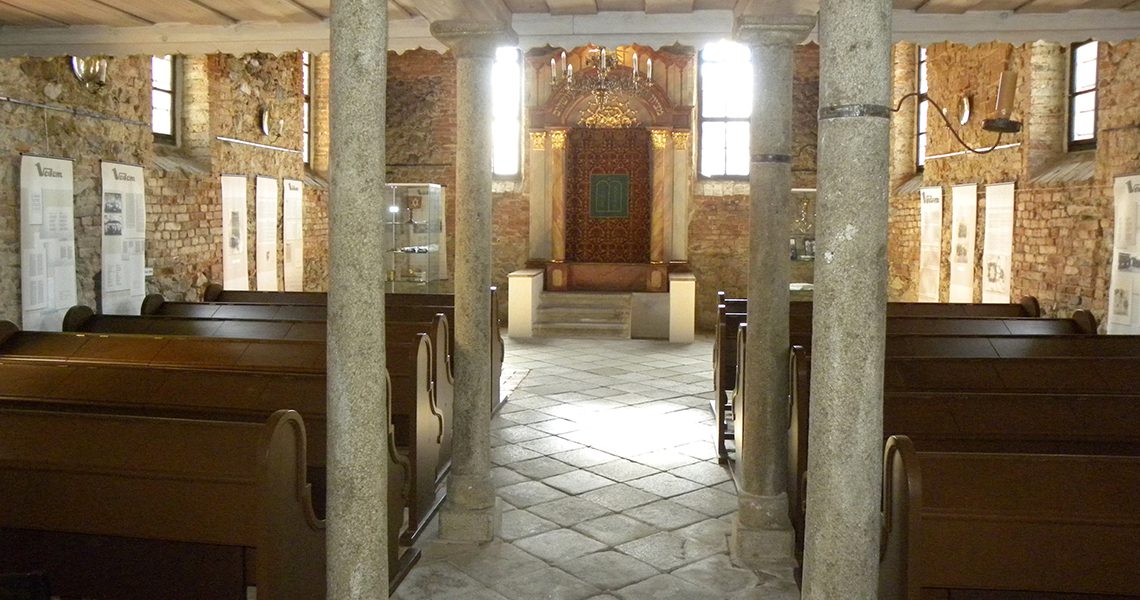
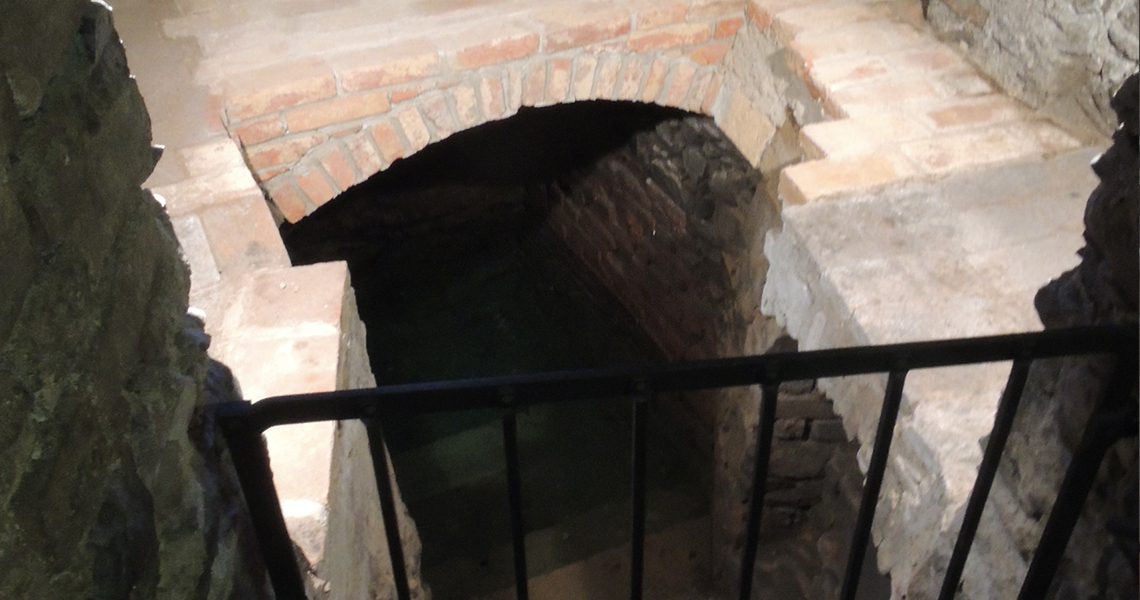
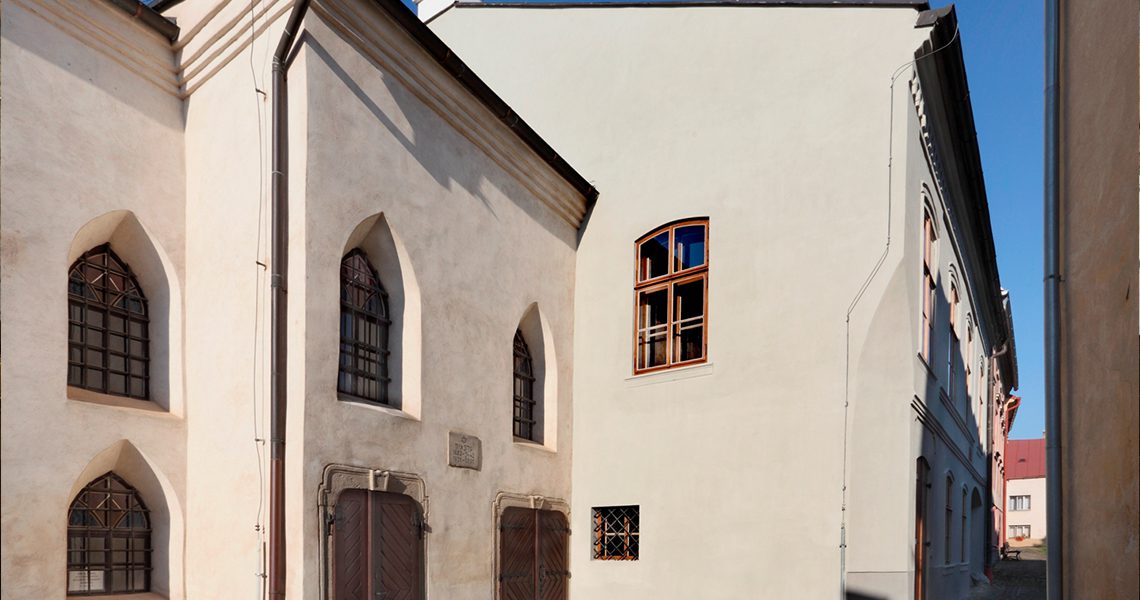
Address: Karlovo nám. 541, GPS 49°44’40.728″N, 13°22’28.299″E
www.10hvezd.cz/en/object/polna/
USTEK (AUSCHA)
Numerous records of Jews living in Ustek can be found in Land Books dating all the way back to the 16th century, when a small Jewish enclave consisting of one small street and eight buildings was established in the “Bohemian quarter” on the western edge of the town. The permitted number of buildings and families was tightly controlled and remained unchanged until the middle of the 19th century. The local Jews had no synagogue of their own prior to the Thirty Years War and services were thus held in one of the Jewish homes. In 1794 the community erected a new synagogue – a curious neo-classical tower-like structure made of sandstone. Other unique features include a classroom and teacher’s quarters located in the basement of the building. During renovations in 1851 a neo-Renaissance entrance hall was added on the northern side, the synagogue was raised, and the main hall received a new women’s gallery and was decorated with Islamic motifs.
The synagogue remained closed after the war. It quickly deteriorated; the roof collapsed and the building was slated for demolition. In 1993, it was taken over by the Federation of Jewish Communities, which renovated the building in 1994–2003. A continuing problem, however, was groundwater seepage into the walls of the synagogue and the insufficient drainage of the surrounding land. The revitalization project provided for proper insulation of the foundations and for rebuilding the stone terraces beneath the synagogue, along which one can now safely descend to Úštěk Creek and from this impressive vantage point admire the synagogue and the surrounding buildings.
The revitalization project also included work on the adjoining rabbinical house at Židovská Street No. 96. The late neo-classical building from the middle of the 19th century once housed the rabbi’s quarters and after 1850 was also home to a Jewish school. The rabbinical house, which had been renovated on numerous occasions, required thorough rehabilitation work including sewerage, repairs to all the ceilings and partitions, electrical wiring, water supply, and heating.
Since the completion of renovation work on the rabbinical house, the former rabbi’s quarters and school on the first floor have been used as additional rooms for the Jewish Schools in the Czech Lands exhibition, which had opened several years earlier in the former Jewish school in the basement of the synagogue.
The theme of the exhibition is Jewish Schools in the Czech Lands.

Address: České předměstí 95, 96, GPS 50°35’2.463″N, 14°20’18.971″E
www.10hvezd.cz/en/object/ustek/
